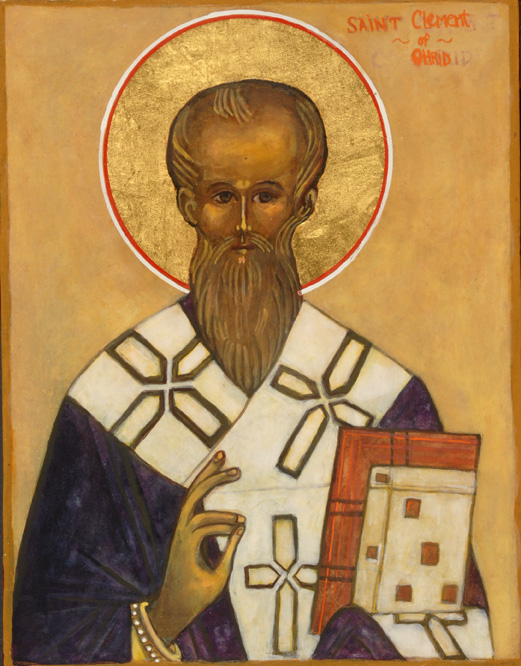The light of Saint Clement

Ohrid – when you come here for the first time or for who-knows-which time, when you enter the church “St. Sophia”, “St. John” at Kaneo, “The Holy Mother of God Peribleptos”, or you climb up the magical Plaoshnik, always and everywhere you have the feeling you are being penetrated by a miraculous ray of inexplicable light, coming neither from the sun rising above Galichica, nor from the crystal waters of the Lake, named White in the times of old, and now bearing the name of the city – Ohridsko. This light shines from the ever-present spirit of the saint-protector of the city, the founder of the Ohrid archbishopric and its first bishop, spreader of enlightenment and establisher of the Old Slavonic language as the third official language of the Orthodox Church, Saint Clement of Ohrid. His protective presence – just the way he is represented on the fresco in the church. “St. Spas” in the village of Leskoec, holding the model of the city in his hand – can always be felt, when you walk the narrow, stone-paved streets in the old part of the city, when you are being flooded by the waves of the “strmec”, when you are walking into a whitewashed house with its beams standing high above the passers-by, when dazzled by the petrified time you touch the walls of its ancient churches and faced with the images on the frescoes and the icons you face eternity in contrast to your own smallness and transience. And again, you can feel Clement everywhere.
The legend says that “when Clement came to Ohrid, he didn’t only start teaching the inhabitants of the saint brothers’ Cyril and Methodius glagolitic alphabet, but when he saw that they lived in huts covered with straw and supported by beams, he also started teaching them how to build nice stone houses. First he built his church, and afterwards they all started building nice stone houses.” He taught them how to plant and graft fruit-trees, he healed them with herbs and various plants, and he taught them how to evade sieges of conquering armies.
Clement, one of SS. Cyril and Methodius’s best disciples, who also took part in the Great mission in Moravia, was extremely close to Methodius even in the days of his youth. After their teachers’ death, he and his peers were banished from Moravia and Panonia, and so in 886, by Knyaz Boris’s decree, Clement, aged 45, was sent to Kutmichevica (near Ohrid), to encourage the Christian spirit and the people’s faith, to teach and enlighten them. Nearly 3.500 disciples gathered around him, and so he is considered to be the founder of the first great Slavic University. For seven years he was spreading the light of knowledge, he translated Gospels, he established the fundaments of the Old Church Slavonic language, he created the first church library on the Balkans, he was a music pedagogue and composer of spiritual works, and in the year 893 he was ordained the first Slavic bishop of the church of Ohrid, which continued the tradition of Justiniana Prima. Clement, the bishop of Velika, the apostle missionary, teacher, translator, poet, becomes the pillar of the Slavonic church of Ohrid. His biographer, the Ohrid archbishop Teofilact says that “Clement’s poems resembled psalms”, that good was his knowledge of the biblical literary skills. It is also known that he fluently spoke and wrote Latin, Hellenic, Hebrew, Khazaric, he had considerable knowledge of Arabic – he was a great erudite, in one word – a genius.
His peer Naum had greater skills as a healer, teacher and transcriber. He came to Ohrid at Clement’s request, despite his feeble strength. Nevertheless, Naum continued the work with great enthusiasm, completing Clement’s deeds. He is considered the founder of monasticism in Macedonia.

